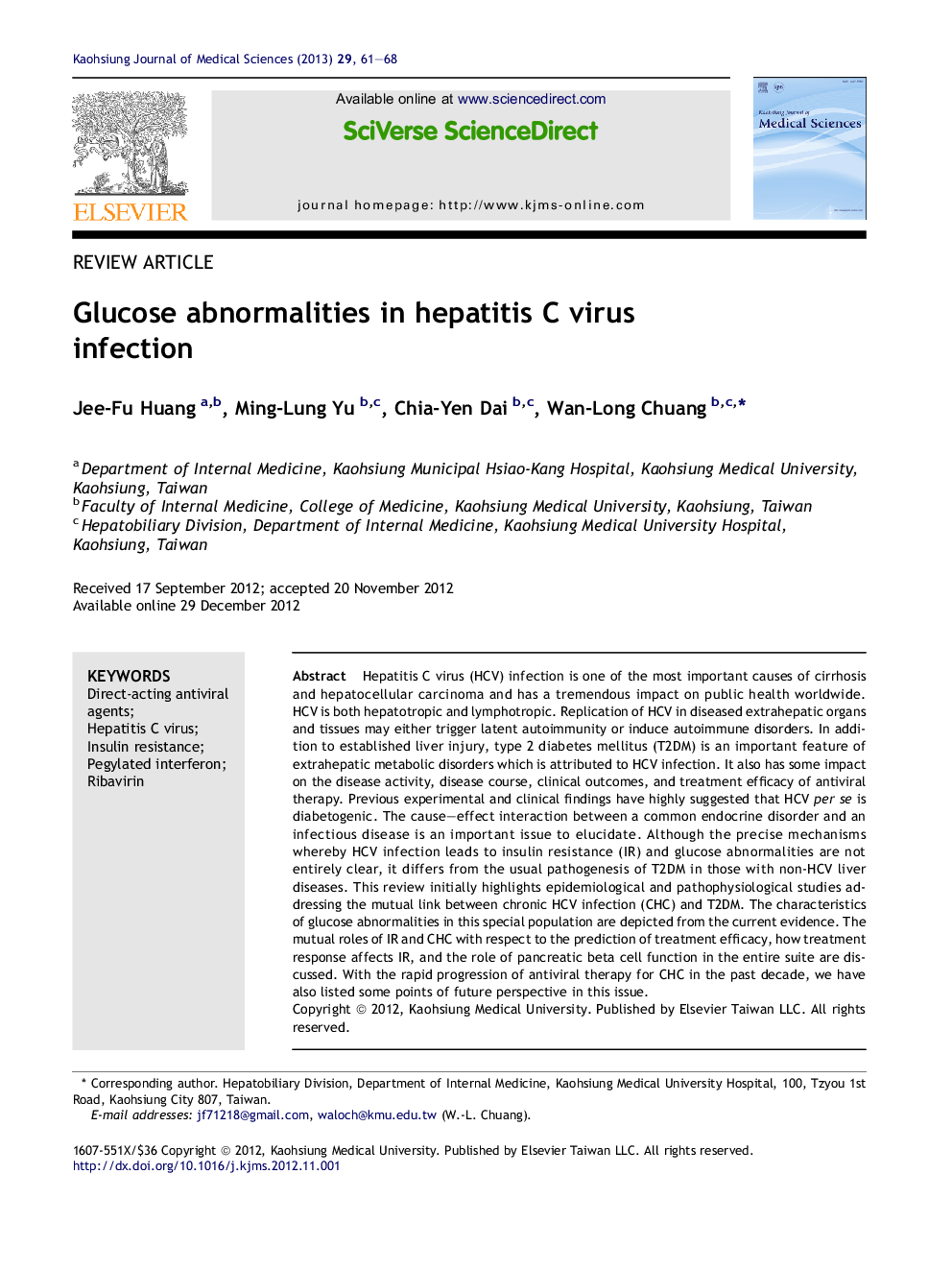| Article ID | Journal | Published Year | Pages | File Type |
|---|---|---|---|---|
| 3485880 | The Kaohsiung Journal of Medical Sciences | 2013 | 8 Pages |
Hepatitis C virus (HCV) infection is one of the most important causes of cirrhosis and hepatocellular carcinoma and has a tremendous impact on public health worldwide. HCV is both hepatotropic and lymphotropic. Replication of HCV in diseased extrahepatic organs and tissues may either trigger latent autoimmunity or induce autoimmune disorders. In addition to established liver injury, type 2 diabetes mellitus (T2DM) is an important feature of extrahepatic metabolic disorders which is attributed to HCV infection. It also has some impact on the disease activity, disease course, clinical outcomes, and treatment efficacy of antiviral therapy. Previous experimental and clinical findings have highly suggested that HCV per se is diabetogenic. The cause–effect interaction between a common endocrine disorder and an infectious disease is an important issue to elucidate. Although the precise mechanisms whereby HCV infection leads to insulin resistance (IR) and glucose abnormalities are not entirely clear, it differs from the usual pathogenesis of T2DM in those with non-HCV liver diseases. This review initially highlights epidemiological and pathophysiological studies addressing the mutual link between chronic HCV infection (CHC) and T2DM. The characteristics of glucose abnormalities in this special population are depicted from the current evidence. The mutual roles of IR and CHC with respect to the prediction of treatment efficacy, how treatment response affects IR, and the role of pancreatic beta cell function in the entire suite are discussed. With the rapid progression of antiviral therapy for CHC in the past decade, we have also listed some points of future perspective in this issue.
